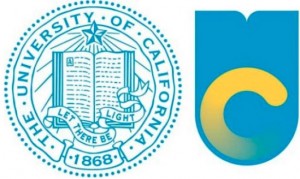
http://advertising.yahoo.com/blogs/advertising/believe-advertising-202903879.html
Yahoo! has been making a lot of big acquisitions under recently appointed CEO, Marissa Mayer. I recently had a discussion with colleagues about the idea of aligning with people or things who you would always bet on (or never bet against). My sports gambling friend always says to never bet against the Lakers in the long run. There may be losses but in the big picture they tend to win more than lose (LeBron 2014!!!). Elon Musk of Paypal, space travel, and now most well-known for Tesla is someone who seems to have the Midas touch (BTW, look up his solution to a 30 minute commute from LA to SF and 1 hour from LA to NY). Warren Buffet, enough said. I’ve spoken to a couple angel investors and know a few Tesla leaders who would bet on Elon’s projects in a minute. Someone who is close to making that list is Marissa Mayer. She’s been making a lot of controversial moves that I think are the right moves. She identified that Yahoo!’s strength spans beyond Search Engine Marketing and makes decisions to strengthen the company’s position beyond search. She brings a solid track record from Stanford, Google, and is now making waves at Yahoo.
Part of their change is to give the logo a makeover. (As a marketing agency in Orange County, we know a thing or two about makeovers.) Yahoo! plans to release a new logo every day during the month of August. You can follow the daily updates here: http://www.yahoo.com/dailylogo. In September, the winning logo will be announced.
While most businesses overlook the impact of a new logo, there have been quite a few epic fails in recent memory. Until they announce in September, here are some examples of logo redesigns that cause backlash and negativity.
University of California:

Seattle’s Best Coffee (I personally liked this one):

London Olympics:

And, of course, GAP:

JC Penny (JCP) has been making headlines over the past year due to a strategic shift in its pricing model. About a year ago, newly hired CEO, Ron Johnson, announced that JCP will no longer promote sales and offer coupons to its customers. Instead, they would offer everyday low prices. JCP wanted to offer shoppers a no-nonsense way to shop without worrying about whether or not they are getting the best deal possible. Theoretically, that made some sense. From a business owner’s perspective, that makes even more sense. A simple, systematic, uniform pricing model saves labor cost, stabilizes inventory, and allows a method to manage costs/margins much easier. Time and labor is money, so if you’re saving those two resources, you’re going to save money. So how did JCP miss the mark?
A recent NY Times article interviewed Tracie Fobes from Penny Pinchin’ Mom. She epitomizes the fallacy in JCP’s logic.
When, a little over a year ago, J. C. Penney stopped promoting sales and offering coupons and instead made a big deal about its “everyday” low prices, Ms. Fobes stopped shopping there. It wasn’t that she thought the prices were bad, she said. She just wasn’t having any fun… most shoppers, coupon collectors or not, want the thrill of getting a great deal, even if it’s an illusion. In recent months, Penney recognized that human trait and backtracked on its pricing policy, offering coupons and running weekly sales again”.
JCP grossly underestimated the human aspect of its customers. Humans don’t just buy based on price. We buy based on feelings and emotions. (Ironically, Mr. Johnson was recruited from Apple, a company notorious for selling on perceived value and brand equity, not price) We want to feel like we got a steal. It’s an experience. It’s a great feeling to see a discount on our receipt. It’s the reason grocery store cashiers are now trained to grab a red pen and circle the “club card” discount total on your receipt before you leave. It’s not because you got the best deal available. It’s to give you the proud feeling and emotional elation of realizing you did a great job on your purchase. That’s what we like.
Does the same hold true for online retailers? Would JCP’s strategy work for e-retailers? Online shoppers have fewer barriers to price shop compared to brick-and-mortar shoppers. With a few keystrokes you can compare prices from multiple websites. Due to these low barriers, the assumption is that online retailing is all about price. Traditional shoppers don’t have the luxury of walking or driving to 10 brick-and-mortars for price comparisons. If they want to touch the product before buying, their options are limited, so you don’t need to be the lowest price to earn the sale.
While online retail may be more price sensitive, you need to take a look at yourself and your competitive landscape. Price is important. However, check the ease of navigability on your site. Compare the efficiency of your shopping cart process compared to competitors. If yours is clunky, update it. If it’s ugly, redesign it. Simplify your sitemap. Offer shipping deals. Build a retargeting campaign to stay connected when they shop around. Note a regular price next to “your” price. If your company has a mission or cause (think Tom’s shoes), make it known.
Just remember, people don’t always buy based on the absolute lowest price. Before focusing on how to sell more… focus on understanding why people buy. Tap into their emotions a bit. This may allow you increase sales while, most importantly, maintaining healthier margins.
“If you know your enemies and know yourself, you will not be imperiled in a hundred battles; if you do not know your enemies but do know yourself, you will win one and lose one; if you do not know your enemies nor yourself, you will be imperiled in every single battle.” Sun Tsu, The Art of War
SEO has become a series of battles to be won. Years ago, it was easy to be a one trick SEO pony and be successful. Using link farms, bots, cheap overseas labor and other automation tools made SEO a robotic process. Fast forward today and you’ll see an entirely different battlefield. It’s not enough to run what we call “Ronco” campaigns (Set it and forget it). Every month there seems to be a new Panda or Penguin update altering the landscape of the SERPs. You need to know your “opposition” as well as you know your own business. (Of course, I’m not saying Google is an enemy. My point is that their decisions sculpt the challenges that we must overcome in our landscape.)
SEO isn’t easy. You must optimize but not over-optimize. You need good, healthy, fresh content, but not too thin and not too thick. You need links, but they need to be quality and “natural”. Use keywords but don’t overstuff them. Try hard without appearing to try too hard. Make people like you. Now do all this without knowing the exact recipe or strict outline of the “perfect” result.
As a Certified Google SEM agency, we decided to jump into the Organic game just as Google began its game-changing updates. How is it that our clients continue to “not be imperiled in a hundred battles” during the most volatile time in our industry’s history?
Our clients have seen the benefits of this strategy. We would love to help you navigate through the confusing and evolving organic search environment. We aren’t the cheapest SEO. We don’t want to be. We don’t use low cost, overseas labor. We don’t care for it. More importantly, we’ve learned that our clients don’t want “cheap” either. As written in a great Harvard Business Review article:
– Michael Won
“Formerly Ungoogleable”
Question: Ever wonder why SEO is so complicated?
Answer: Because Search is complicated. Here’s an overly simplified explanation of the landscape your SEO needs to navigate.
Everyone has a story. Whether it’s about logging equipment or chemicals, there’s a story. Think about what your company stands for. What is your business passionate about? How does your story fit within all the content you’re planning and publishing for your company?
For example, a close friend of mine is a youth pastor at a local southern California church who along with a group of friends started a very small clothing line in 2009, LETGOdwork. They got involved in youth conventions, Christian music festivals, local gatherings, etc. After attempts at different types of marketing, they hit their sweet spot…. social media. They figured out after a few trial and error experiences with marketing, that their initial buyers loved the simplicity of their products so much; they did the marketing for them. Posted photos, shared posts, tagged friends/photos, contests, giveaways, and the occasional music celebrity would receive a few items to wear at concerts to help boost natural interest. They figured out who their demographic was very quickly and capitalized on their approach. Needless to say, after different strategies, successes and failures, this small company now has well over 18k twitter followers, 10k friends via Facebook, have produced over 50 designs, expanded apparel types beyond just t-shirts and can now be found in retail stores across the country.
For some business owners, marketing themselves and their work is as painful an experience as a math major having to write an English term paper. But the reality is if you own a company and want it to succeed you have to tell people about it and that was something that my friends at LETGOdwork loved to do, they truly had the desire and passion to tell everyone about their clothing line.
I implore anyone who loves what they do or what their company stands for to start the process of marketing, even if you hate or have never tried marketing. First, get over the misconceptions. People have many different ideas about how to go about marketing a business. Whatever path you choose, not understanding which channels to use, how much money to spend, or what type of results to expect can make you uncomfortable. Starting with the facts allows you to put together a plan based on tangible data rather than on some vague notion of what you should do.
Next, figure out what you are trying to accomplish. There are many forms of marketing, and most businesses will be an initial great fit for at least one of them. You can write a blog, engage in social media, create search engine campaigns, develop content for your site, revamp your website for better conversion rates, network in person at events, make phone calls to existing customers, or participate in speaking engagements like webinars or podcasts. Do the marketing that you’re most comfortable with first and when you see the results, you’ll likely be motivated to try other types.
Learn more from the experts. Now that you’ve decided where to start, you need the knowledge and tools to do the job right and get the results you seek. Once you feel confident in your abilities, then you can start making some larger decisions with ease. The confidence to make those decisions can only come from basic measurable, data, conversions, sales, etc. But we cannot look to a crystal ball from “anticipated results”, we have to actually go out there and try some things.
Start with an idea, a mission, a reason, a purpose…. For the guys at LETGOdwork, it was simple:
Orange County based brand founded in 2009 by some friends that wanted to make simple, clean, high-quality clothing that they could be proud of. LETGOdwork is about positivity. We believe the world needs change and that true change begins when we LET GO.
— Joe M.
Whenever one of the major players in our industry comes out with a new concept or launches an innovative widget, online marketing agencies always get calls asking for our thoughts and opinions. Facebook recently launched Facebook Graph Searches and the questions poured in. Ironically, it seems people were less interested in ways to leverage this technology to grow the business (which is the goal of any marketing agency) and instead wanted to voice their opinions on things like user privacy and the detrimental affect this would have on a user experience.
We’ve always taken a careful and conservative approach to all of our marketing campaigns, whether it’s for paid search marketing, content marketing (otherwise known as SEO) or social media. Due to our strategy, we haven’t taken a firm stance regarding FB Graph. We do however like to find humor in all that we do. That being said, you just knew it was a matter of time until someone would start a tumblr about this issue. We hope you can chuckle about this as much as we did. http://actualfacebookgraphsearches.tumblr.com/
Can you believe it? It’s already that time of year… the most wonderful time of the year. The Holidays are here. To SEM’s, it’s the time of year when normal search traffic goes bezerk. The usual purchase and conversion patterns go out the window. One key metric that changes during the Holiday season is your revenue per click (RPC). RPC tends to drastically improve heading into Thanksgiving and through the middle of December. For obvious reasons, there is a higher urgency for people to buy/convert during the holiday season. The chart below shows a 30% increase in RPC on Thanksgiving, and a more drastic jump on Cyber Monday. Numbers continued to stay high throughout December for the expected holiday shopping season. It’s not too late. Call us now so we can get your campaign going. The numbers play in your favor and we’d love to help you out. 949-330-7060
I’m a huge fan of the Food Network. I love to cook. I love to grill. I love experimenting with new recipes. One of the more entertaining shows on the Food Network is called Restaurant Impossible. The premise of this show is about a chef named Robert Irvine, who always reminds me of NFL Referee Ed Hochuli due to them both wearing tight fitted shirts that show off their guns. (Let’s be real, if I was a walking gun show, I’d probably buy my shirts 2 sizes too small too.)
Chef Irvine goes into a failing restaurant and has 48 hours and $10,000 to turn it around. A majority of the show is spent fixing the operational and aesthetic aspects of the restaurant and the menu. However, there’s always a 5-10 minute segment focused on marketing. Chef Irvine always needs to find a way to generate buzz and bring customers to the grand re-opening of the restaurant. In marketing terms, he’s focused on “push marketing.”
I have a handful of friends in the restaurant business and they’re always looking for ways to attract more patrons. They all share a similar sentiment: If I can just get them to try my food, I think they’ll come back. Here are a number of very cool stats published in a collaborative study titled “The Mobile Path to Purchase” by Telemetrics, xAds, and Nielsen. These are some rather convincing numbers. Especially since I my own behavior seems to fit right into these statistics. I hope this helps all you restauranteurs:
Bottom line: get your business on google maps/local apps, yelp, urbanspoon, and other social directories. We can help you get there.
Here’s an infograph for you to enjoy with more data: http://www.telmetrics.com/mobile-path-to-purchase-study-restaurant-searchers/